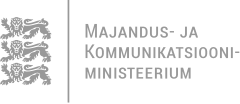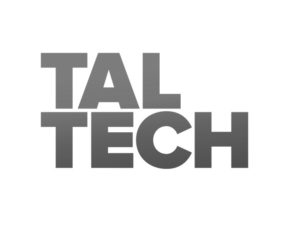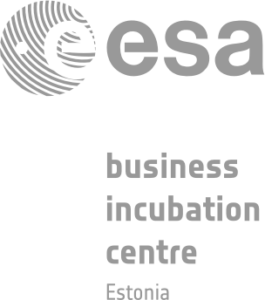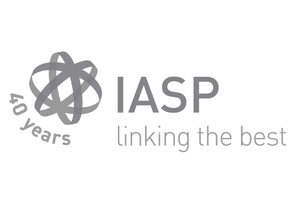06.06.2016
Ain Aaviksoo: Estonia could be a testbed for new e-services
According to Ain Aaviksoo, the Deputy Secretary General on E-services Development and Innovation at the Ministry of Social Affairs, Estonia could be a place to test new e-services, since it is easier to introduce innovative e-solutions and test them for other countries in a small country with high technological readiness and high social expectations.
How should Estonia introduce e-services and innovation to foreigners?
From technical and cultural perspective, it is relatively easy to bring new e-services to the Estonian market since our society is ready for innovation. Estonia could be a place to test new e-services. Estonians trust e-services, meaning that here it is possible to determine more quickly whether a service is useful or not. Secondly, attaining agreements between parties is as complicated in Estonia as it is in any other country: if doctors, hospitals, general practitioners, specialist doctors, state and institutions are able to reach to an agreement in Estonia, you can be sure that the service has been already thoroughly tested for other states as well.
Are there any good examples showing that Estonia is already a testing place for new e-services?
Nationwide digital prescription, for example, has been available in Estonia since 2011, and it has been implemented in about ten European countries. The second example is our health information system which enables to securely exchange data between different healthcare organisations – many countries are developing a similar solution at the moment. Yes, there might be very good or even better doctor`s desktop solutions in other countries but these solutions remain hospital-centered. Our system is unique, providing a complete overview of patient`s health record.
What is the level of e-services being provided in Estonia today?
Rather good. This means we have the potential to do even better. We have end-user applications that the service provider has created and been responsible for, which are less user-friendly or effective than they should be. At the same time, the new internal information systems of our two largest hospitals, the North Estonian Medical Centre and Tartu University Hospital, have been rated 4+, some components 5+.
Our ideal complete jigsaw is missing certain single pieces. For example, many countries implemented a solution for providing feedback on medicine use at an early stage in their eHealth programmes. Estonia cannot rise above the second level in international ratings on the 8-level scale, since this specific function – to whom and in what quantity, and when a doctor prescribes a medicine – is considered one of the first basic functions. We have, however, resolved the issue of integration, which is considered an indicator of the eighth level. We have accomplished complicated things which are considered to be at the highest level elsewhere in the world – for example, integration of all providers and the possibility for the patient to see his or her own records and manage their use.
These missing pieces must be dealt with, since in terms of the whole picture, we will then have made a sudden great leap. At the same time, we are planning an even greater leap which is expected to take two-three years. This involves the use of our existing genetic data and disease probabilities when making decisions.
What is the state of eHealth in Estonia today?
We have just recently agreed on a new strategy. The way eHealth development is managed has changed. The management level has been raised. All existing projects will now be implemented on a new cultural basis.
This means that all development projects must come to an end within a period of six months. We must be able to produce results within six months from the moment the decision is made. We will keep sight of larger visions, such as the digital registration point, the family doctor desktop and the patient portal, but we will extract pieces which can be completed in six months. We are able to plan the next stage more effectively by applying experience of the previous phase.
What does the new eHealth strategy place emphasis on?
It places emphasis on the solving of the health sector’s real problems. Today there is little interoperability between different parts of the healthcare system – family doctors-specialist doctors, different specialist doctors, the healthcare system and the social system, etc. From the patient`s viewpoint, it is crucial to assure the integrity of different healthcare service providers. The second point of emphasis is on an orientation towards quality and results. We will strive to support the changing of the healthcare system from increasing capacity to increasing results.
The third point of emphasis is on personalised medicine, which enables to collect genetic data and health records. By applying personalised medicine, we are able to offer the most optimal service or alternatives to the individual. The fourth is on telemedicine. This means liberating health services from a physical location, enabling to provide flexible care and, thus, improve the healthcare system.
Strategically, the most important goal is to reduce time-consuming work. We will try to streamline processes and quickly improve all of the process phases that do not create value, in particular, those which consume the very expensive time of doctors and nurses. All of the solutions offered to healthcare system must lead us to time savings. A strategic goal would be to come up with a way to resolve the same number of cases with the same quality, for example, with six million visits instead of eight million. This means that we would have up to 500,000 physician hours at our disposal to do something better.
What is the Estonian personalised medicine project?
The Estonian personalised medicine pilot project is intended to support three areas. It should support everyday clinical practice. Those personalised medicine practices which are already known to work on a small scale today, could provide people with more precise treatment and make the healthcare system more effective. Secondly, it creates opportunities for research and development activities. Personalised medicine should also promote business development, bringing investments and jobs to Estonia. During the next 3-5 years, the project is expected to bring investments with a total amount of 100 million euros to Estonia. In addition, the pilot project is expected to bring at least 3000 high-tech jobs and 30 new businesses. From the clinical viewpoint, we would like to find up to 500,000 people who are willing to donate their genome and health data to science. Today, there are only 50,000.
The implementation of eHealth has been coming along at different speeds in different countries. Based on Estonian experience, what lessons have been learnt that might be passed on to other countries?
The main lesson is trust. With each subsequent service, we must establish and maintain trust – Estonia has managed to do this. As a consequence, Estonians have positive attitude towards new e-services. If there is trust, one is able to introduce innovations. Secondly, we have secure data exchange standards and unified data exchange layer between all institutions. Here, it is essential to make bold decisions. For the third, it is important to concentrate on developing a flexible and distributed system, not only one central service. In the case of digital prescription, for example, only certain lists are located centrally – four different institutions and seven different databases are flexibly joined. This allows us to build up services more flexibly, giving us a clear advantage, since we do not have to consider all possible services while creating a large information system.

















